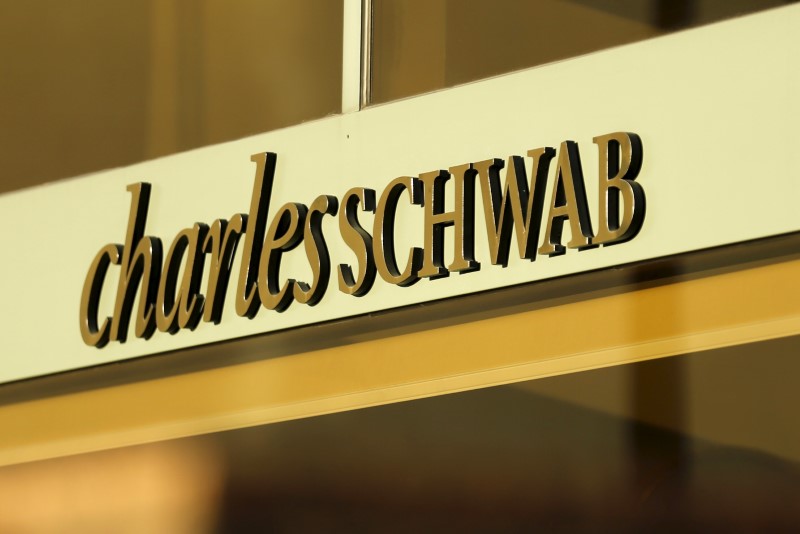Quiver Quantitative - Charles Schwab (NYSE:SCHW), a prominent player in brokerage and banking, faced a challenging year marked by declining profits, assets, and deposits, reflecting the broader impact of the Federal Reserve's interest rate hikes on the financial industry. The firm's net new assets dropped significantly in the fourth quarter, falling 48% to $66.3 billion, while net income almost halved. Furthermore, a notable decline in bank deposits and total retail brokerage accounts falling short of analyst expectations added to the firm's woes. These setbacks initially led to a sharp drop in Schwab's share prices, though they slightly recovered later in the trading day.
The year proved to be one of the most turbulent in Schwab's over five decades of operation, largely due to the regional banking chaos and the eroding value of investments caused by interest rate hikes. Schwab, like many financial firms, faced increased funding costs as depositors shifted their resources to higher-yielding options like money market funds. In response, Schwab resorted to more expensive funding sources, including retail certificates of deposit and Federal Home Loan Bank advances. CEO Walt Bettinger candidly acknowledged the challenges, comparing the situation to the difficulties faced during the burst of the internet bubble in 2000.
Market Overview: -Charles Schwab navigates a tumultuous 2023 due to rising interest rates, impacting its investments and deposits. -Profit, new assets, and deposits all experience significant declines. -Despite an initial stock dip, cautious optimism emerges as CEO outlines future plans.
Key Points: -Net new assets plunge 48%, net income drops by half, and bank deposits fall 21%. -CEO Walt Bettinger acknowledges the "most challenging time since 2000" due to rate hikes and deposit outflows. -Schwab temporarily relied on higher-cost funding sources but plans to transition to lower-cost options. -Bettinger expresses confidence in improved earnings potential as high-cost borrowings are repaid and investments are reinvested at higher rates. -Schwab targets a net interest margin of 3% by 2025, alongside a 20-30% dividend payout ratio and continued buybacks.
Looking Ahead: -The success of Schwab's navigation through rising rates and deposit competition remains uncertain. -Its reinvestment strategy and cost-cutting measures hold potential for improved earnings, but their effectiveness is yet to be fully realized. -Achieving the 2025 financial goals hinges on the company's ability to adapt and execute its plans effectively.
Schwab's strategy in navigating these challenges involved a shift away from these higher-cost funding sources. CFO Peter Crawford indicated that the firm had repaid 18% of the peak balances from May 2023 and slowed down realignment activities significantly in the second half of the year. This strategic shift was accompanied by a notable increase in client cash in December. The firm's proactive approach also includes considerations for shortening the durations of their securities books to mitigate similar losses in the future, a lesson drawn from the experiences of some regional banks last spring.
Looking ahead, Schwab remains optimistic about its financial trajectory. The firm is focused on reducing its reliance on costly borrowings and reinvesting in its securities portfolio at higher market rates. This strategy aligns with their goal to achieve a net interest margin approaching 3% before the end of 2025. Additionally, Schwab is aiming for a long-term dividend payout ratio of 20% to 30%, supplemented by stock buybacks. Despite the current challenges, Schwab's strategic moves and future plans suggest a resilient approach towards recovery and growth in the evolving financial landscape.
This article was originally published on Quiver Quantitative
